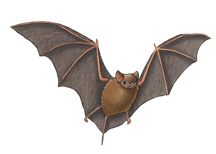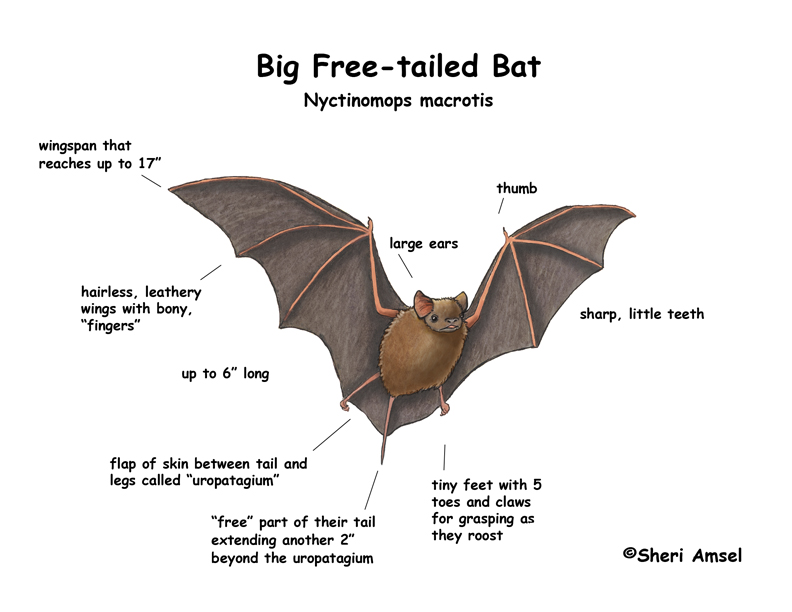

They are found from southwestern Canada, south through the U.S. and Mexico and throughout South America, including some Islands like Cuba and Jamaica.
They live in rocky cliffs roosting in rocks cracks and caves. Like most bats in the U.S., they will roost in buildings.
They can reach up to 6” long with the “free” part of their tail extending another 2” beyond the flap of skin between their legs and tail. They have large wings with a wingspan that reaches up to 17” across. There is a flap of skin that stretched between the legs and tail called the uropatagium.
They are nocturnal, hunting at night using echolocation. Echolocation is a kind of radar that uses the bat’s high pitched calls to bounce off objects. They can actually “see” what is around them by how their calls bounce off their surroundings. They are strong flyers.
They eat insects – mostly moths, but will eat grasshoppers, crickets, etc.
Predators include raccoons, snakes and owls.
They mate in late winter and are pregnant for 3 months (gestation). They have one pup in June. They are dependent on their mother for care and nursing for about 3 months. Females will form colonies while raising young.
They can live up to 30 years in the wild, but most live a much shorter time. They are not a threatened species.
Related Resources:
High Resolution Diagram
Kingdom: Animalia
Phylum: Chordata
Subphylum: Vertebrata
Class: Mammalia
Order: Chiroptera
Family: Molossidae
Subfamily: Molossinae
Genus: Nyctinomops
Species: Nyctinomops macrotis
When you research information you must cite the reference. Citing for websites is different from citing from books, magazines and periodicals. The style of citing shown here is from the MLA Style Citations (Modern Language Association).
When citing a WEBSITE the general format is as follows.
Author Last Name, First Name(s). "Title: Subtitle of Part of Web Page, if appropriate." Title: Subtitle: Section of Page if appropriate. Sponsoring/Publishing Agency, If Given. Additional significant descriptive information. Date of Electronic Publication or other Date, such as Last Updated. Day Month Year of access < URL >.
Amsel, Sheri. "Bat (Big Free-tailed)" Exploring Nature Educational Resource ©2005-2024. December 13, 2024
< http://exploringnature.org/db/view/465 >

